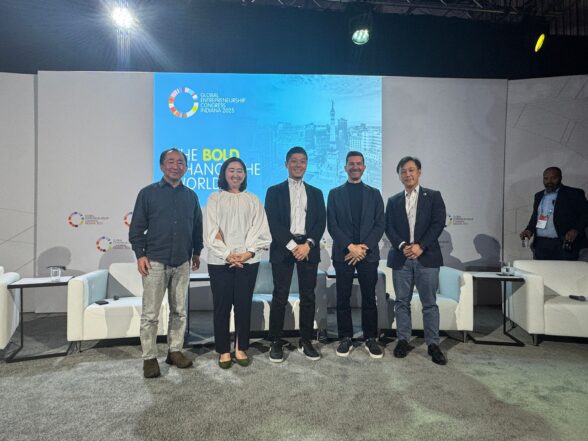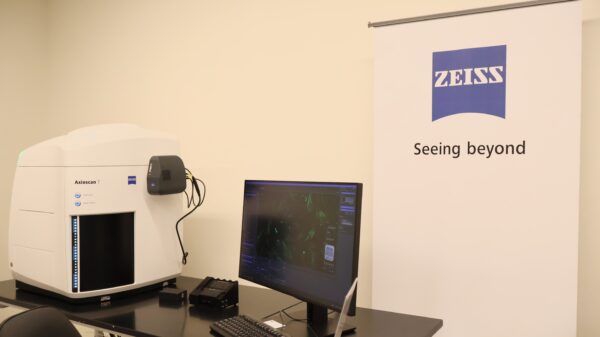CIC Providence General Manager Stacey Messier reflects on the state of work and our flexible reality
Recently I had the honor of being on a panel about the Future of Work for this year’s Academy of Management annual conference. Academic researchers, publishers, and practitioners gathered to talk through the current trends, outlook, and ideas within the future of work space. The following is a short set of observations I shared while on the panel.
How do you define the term, “Future of Work?”
First, what is the “Future of Work?” I define it as how employees and management shift their perspective and create community at work based on the ever evolving needs in a post-pandemic world. Top attributes that fall under this umbrella include in-person and digital community, communication, behavioral dynamics, as well as the physical space we work within. Culturally we’ve moved from speaking about the Future of Work as a buzzword to help us navigate an uncertain time to a set of strategies that inform how and where we operate, the benefits we offer, and the culture we wish to create.
What trends are you seeing in the market when it comes to businesses thinking about the Future of Work?
At CIC, we specialize in creating the intersection between innovation and community, particularly as an in-person, in-office experience. The Future of Work trends we’ve experienced over the last two years boil down to two categories: hybrid teams and industry clusters.
Hybrid Teams
CIC has become a hub for hybrid groups large and small; we see companies renting offices that meet the number of people they imagine being together on any given day rather than the total headcount on payroll. Sometimes these are specific teams looking for an in-person landing pad, other times it may be a larger enterprise with 30+ people in need of space that can help them flex with each employee’s ability to work from home and work from the office.
Recently we welcomed a marketing company that was looking to leave their large standalone office behind for a more flexible offering to help bolster a positive hybrid culture within their workforce. The macroeconomic climate has made traditional leases a challenge for companies still making sense of the Future of Work and finding a low-risk product that can grow with them is key in these bumpy times. Since they’ve joined CIC Providence, it’s been incredible to see their employees activating the common areas, gathering for lunch in the kitchen, and making connections with other organizations within our campus.
Industry Clusters
During the early days of the pandemic, we all sought to find our tribe. As we went back to the office, finding ways to activate our need for community became more and more important. The Future of Work has also evolved from the individual to the collective, not only from a person to person perspective, but from a single organization to many organizations existing in a common place together. In our Providence campus, we have over 30 offshore wind companies that stretch across the breadth and depth of the industry supply chain. Yes, there are companies that may compete against one another, but there are also many specialists providing goods and services during these early stages of establishing offshore wind in the US. In Philadelphia, life science companies at all stages of growth call CIC home for both lab and office space. And in Tokyo, we regularly host companies at the intersection of government and innovation.
What do you think are key opportunities in the Future of Work and what type of research would you like to see management scholars focus on in this area?
The first true execution of an open office design was in the 1960s. Post-pandemic we’re ready to see the next evolution of office environments and employee engagement. I’m curious about studies that explore office spaces vs. productivity in pre- and post-pandemic data sets. How might researchers help us shape the next wave in office experience innovation?
In a previous role I had the opportunity to design the next office environment for a 250-person company. We were leading through change and making key decisions in 2021 that were immensely informed by the data we gathered from teams around the organization. We uncovered a need to create more modular, collaborative spaces that accommodated whiteboard brainstorming and hybrid video calls. We shared pain points from previous office habits and identified touch-down spaces, “quiet car” areas, and flexible common areas. Overall, our goal was to create an environment that fostered not only productivity but one that was truly relevant to the way people work when they come together in person.
Related, I’m immensely curious how the Future of Work has changed the way we think about brick & mortar business locations vs. thriving in a collective like the flexible work spaces we offer at CIC. The New York Times recently reported on “Momunes” as a new advent of post-pandemic life where single mothers are living together under one roof. This feels like an analog for what we see in our innovation campuses around the world; whether you’re a small team from a large enterprise or a solo entrepreneur, our members find success by participating in a collective like CIC.
What do you think are the biggest risks business leaders face when it comes to the future of work? How might researchers help address these?
The Wharton School defines status quo bias as the preference for maintaining one’s current situation and opposing actions that may change the state of affairs. Mitigating this type of bias from within a business’ leadership team is key, particularly when mandating that workers come back to the office. Here are two questions to consider if you’re experiencing resistance, attrition, or other reactions to the call back to office:
- Does your leadership team believe remote/hybrid work is a right or a privilege? What is the majority opinion and what is in the minority? How might this inform your policies, benefits, and employee engagement?
- Why are you asking people to go back to the way things were? Is that ask grounded in burnout, longing, or other beliefs that may or may differ from current employee needs? Go through a round of the Five Why’s to uncover what is at the core of your strategy with each leader. Identify the commonalities and the outliers. Now, what might you change about your strategy moving forward?
Researchers can and will continue to help business leaders understand the potential within their own employee landscape thanks to lagging indicators such as the trio of studies around the effects of mandated return to office. Management scholars can also offer frameworks and tools to help organizations conduct their own internal research so that they can retain top talent, increase the quality of prospective candidates, and smoothly transition through various phases of change management.
In conclusion
The landscape inside of the Future of Work evolves around us daily. We’ve got to look around to gather ideas on how to keep up with the change but more importantly, we’ve got to study ourselves. How has environment, community, and connection changed for you over the past few years? In what ways do you find your own habits, needs, and desires different from before? And finally, what is your current belief around the purpose of the physical and virtual environment of work? I hope your next discussion about the Future of Work is fruitful.




